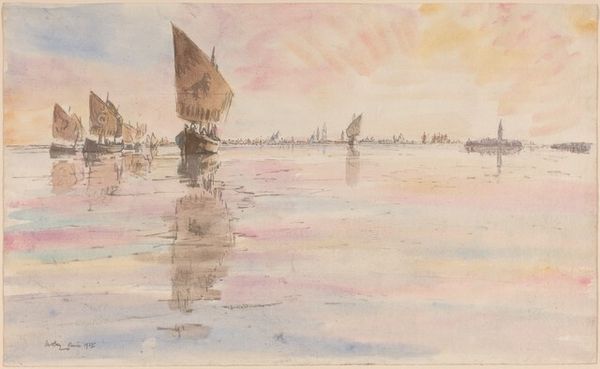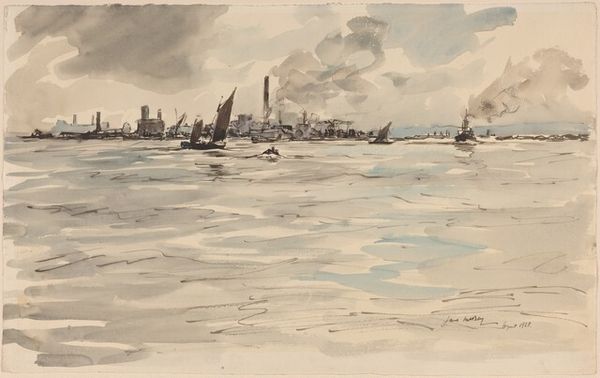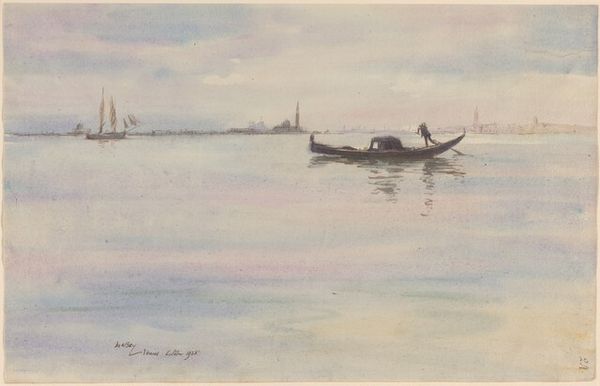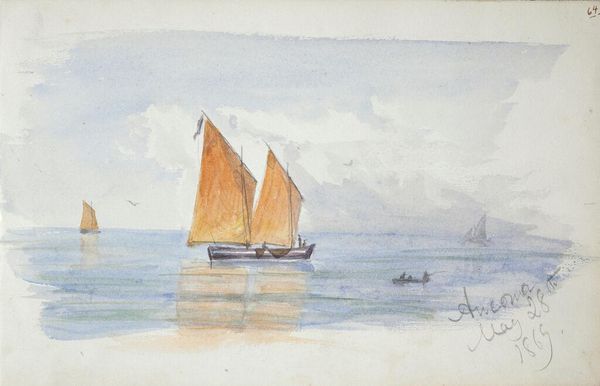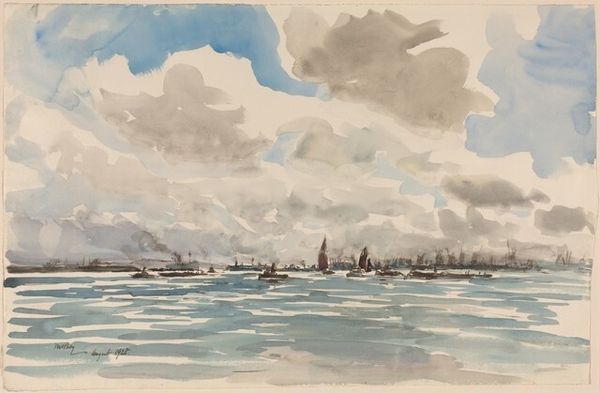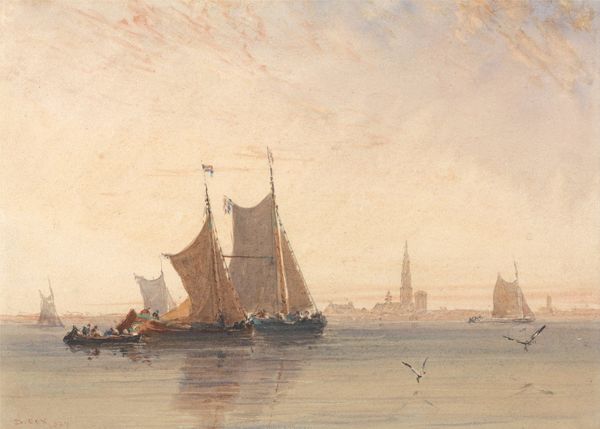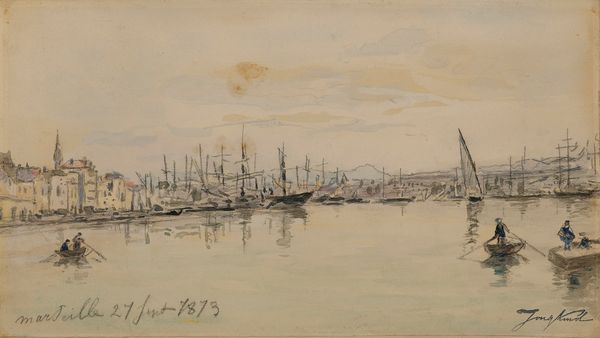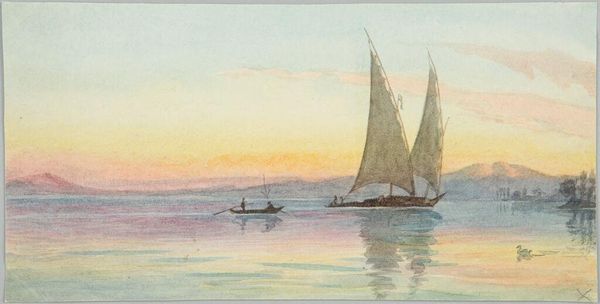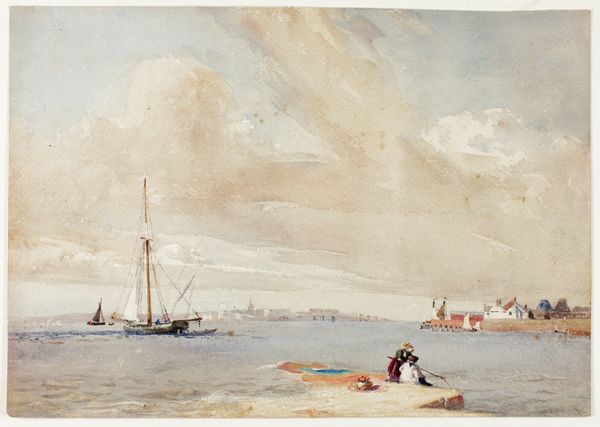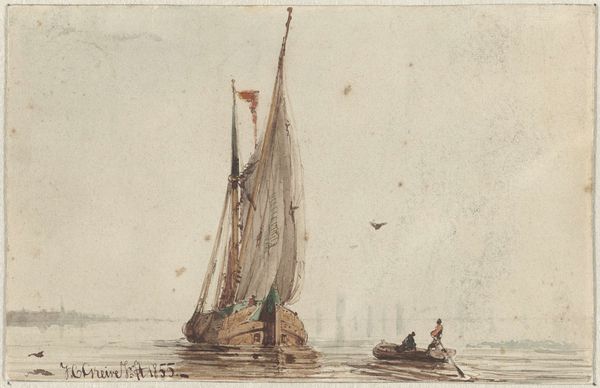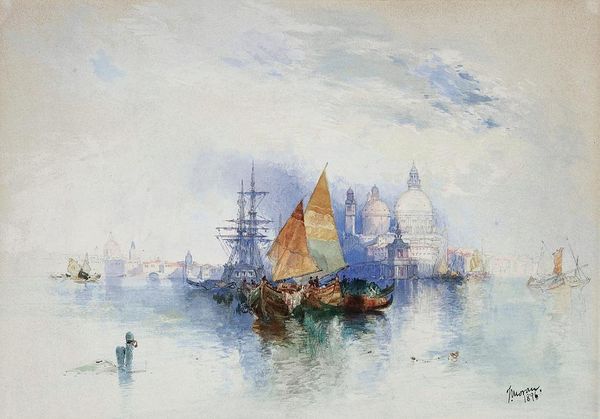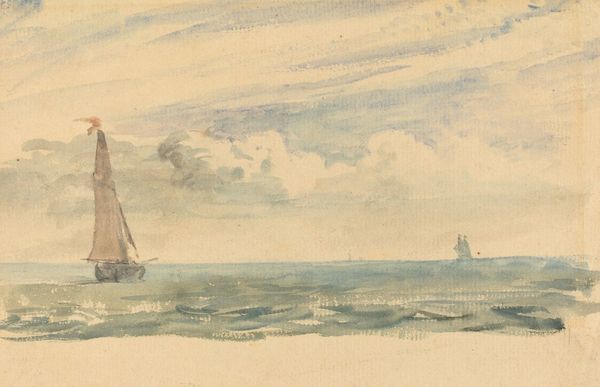
Dimensions: overall (approximate): 31.2 x 46.7 cm (12 5/16 x 18 3/8 in.)
Copyright: National Gallery of Art: CC0 1.0
Editor: Here we have James McBey’s “A Tartane Leaving Venice,” made in 1926, in watercolor, ink and graphite. The whole thing shimmers with this soft light. What really strikes me is how the city seems both present and distant, like a fading memory. How do you interpret this work? Curator: The “Tartane Leaving Venice” indeed captures that poignant, in-between state. Consider how water, as a primary element, signifies the unconscious and the continuous flow of time. The tartane, that distinctive Venetian boat, is moving *away* - a potent symbol of transition. Notice how the artist employs light? Is it dawn or dusk? Editor: Hmm, dusk maybe? There's a sense of something ending... Curator: Perhaps. Now think about Venice itself. It has always been laden with cultural baggage. A city of romance, decay, of immense wealth and subsequent loss. McBey, by focusing on departure, evokes the psychological weight of Venice's layered past. Are we witnessing a departure from personal memories, historical eras, or even idealized notions of Venice? Editor: So the boat isn't just *leaving* Venice, it's leaving behind a whole history, a whole set of ideas. That’s pretty deep for a watercolor. Curator: Visual symbols often carry multi-layered meaning. Don’t underestimate their emotional impact, or how their interpretations change across time and personal experience. Is there a personal connection you might have to the boat leaving the dock? Editor: I guess I think about leaving home, moving on... It definitely changes my view of it. Thanks. Curator: Precisely! And that interplay between personal feeling and collective memory makes engaging with art so worthwhile.
Comments
No comments
Be the first to comment and join the conversation on the ultimate creative platform.
